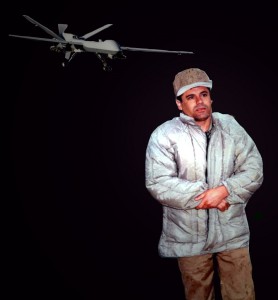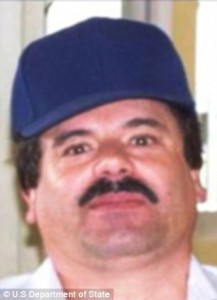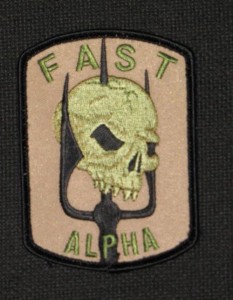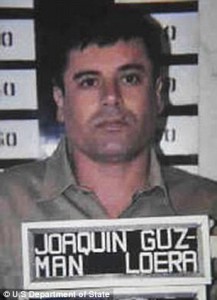The “War on Terror” just keeps expanding. Next, it could go south of the border. And target a whole new group of scary folks. Where is all this headed? We take a look in this three-part series.

Part 1 of a 3-Part Series
Here’s a powerful example of how the 9/11 tragedy opened a Pandora’s Box of dicey military adventures for government operatives of all kinds:
WhoWhatWhy has learned that the White House nearly okayed putting the Special Operations Division of the Drug Enforcement Administration (DEA) and the Pentagon’s gonzo Joint Special Operations Command (JSOC) in the business of killing Mexican drug lords.
This step would have extended assassination policy far beyond the war on terror to a different kind of war: that against drugs and drug traffickers.
As best as we can determine, no decision to unleash this operation has thus far been approved. But, as history tells us, when ideas receive strong support at high levels, they should never be counted out. Because such ideas have far-reaching consequences, they merit close examination.
Private Memos, Public Interest
Although government initiatives—like private ones—often never move beyond the memo pads of mid-level bureaucrats, this one became “real” in the summer of 2010. That’s when the DEA asked the White House for permission to kill El Chapo, boss of the Sinaloa drug cartel. Indeed, it was so close to fruition that in the spring of 2011, none less than President Obama himself weighed in on the possibility of killing the ”narco” in a covert action.
These high-level discussions are revealed in confidential memos of Stratfor, an Austin-based private intelligence firm. Stratfor’s perspective on US intervention in the Mexican drug war was developed over several years, apparently with the help of a DEA supervisor who gave Stratfor information from a top-secret intelligence network. The firm’s reason for gathering information on drug cartels and US intervention in Mexico was to advise international corporations on the risks of conducting business in the country.
Notwithstanding their “private purpose,” such documents are crucial for public understanding of a government that becomes more opaque every year, especially as more and more of its intelligence work is being handed to private contractors such as Stratfor.
The Stratfor memos were obtained by WikiLeaks and researched by WhoWhatWhy in an ongoing investigative partnership. Some of the memos are being published by WikiLeaks for the first time in conjunction with this article. (WikiLeaks previously published other Stratfor documents—relating to General David Petraeus—in association with WhoWhatWhy; our Petraeus article may be read here.)
Mission Creeps
The plan for Mexico can best be understood in the context of “mission creep”: the tendency for large operations to expand in scope, out of control.
Where once the US pursued terrorists under a law enforcement paradigm, the post-9/11 authorization for use of military force (AUMF) defines those tied to the 9/11 attacks as military targets — even if the evidence is secret or highly tenuous. Now, according to some interpretations of AUMF, targets need only have the potential for acting against the US in a manner similar to al-Qaeda.
This May, the Obama administration dropped the long-standing formulation for describing targets, namely “senior operational leaders of al Qaeda and associated forces,” and replaced it with language that is far broader and more vague: “all potential terrorist targets” and “those who want to kill us.”
That revision suggests that, even if Obama did not sign off on the Mexassassinations, the White House may be laying the groundwork for a new “narcoterrorist” front for the war on terror, in which the DEA and JSOC would indeed secretly kill members of Mexican drug cartels. (The Pentagon already targets drug lords in Afghanistan.)
It’s not as if the drug kingpins of Mexico deserve second billing to anyone. With their gruesome tactics — beheadings, acid baths — the Mexican drug cartels are arguably as terrifying as al-Qaeda. Yet if the basis for taking action against them is “terrorism” as conventionally understood, it is significant that no links between El Chapo’s Sinaloa drug cartel and al-Qaeda have been found.
The State Department’s 2012 Country Reports on Terrorism states, “International terrorist organizations do not have a known operational presence in Mexico, and no terrorist group targeted U.S. citizens in or from Mexican territory.”
A DEA spokesperson, Rusty Payne, told WhoWhatWhy he was not aware of any ties between Sinaloa money and terror networks. But, he said, if drug trafficking dollars were found to connect with anti-American terror networks, that would constitute “narcoterrorism” and a national security threat. That, of course, is a big “if.”
In any case, Payne denied that the DEA conducts targeted killings on anyone or would seek to do so.
“That’s not what we do; we’re a law enforcement agency. Our job is to disrupt and dismantle drug networks. We’re not a military organization.”
As for Stratfor, we could not get any comment. WhoWhatWhy was told that Fred Burton, Stratfor’s VP of Intelligence, is the only person at the firm able to confirm whether the DEA sought White House permission to target El Chapo, but that due to travel Burton was unavailable for interview. This is not surprising. The firm’s boilerplate public response regarding the internal documents in WikiLeaks’ possession has long been that it “will not be victimized twice by submitting to questioning about them.”

How scary is the target?
The drug lord in the potential DEA and JSOC crosshairs, El Chapo — the nickname means “Shorty” — has been among the most-wanted criminals in the world since his 2001 bribery-fuelled escape in a laundry cart from a Mexican maximum-security prison, where he was expecting extradition to the US on drug trafficking charges.
El Chapo, real name Joaquín Archivaldo Guzmán Loera, is boss of the Mexican drug cartel Sinaloa, often considered the most powerful drug-trafficking organization in the world. Though estimates vary, Sinaloa is believed to enjoy an annual revenue of at least $3 billion a year and to be responsible for about 25% of the illegal drugs entering the US and 80% of the US meth trade.
El Chapo is an almost mythical figure. He is #63 on Forbes’ list of “most powerful people.” Mexican musicians sing narcocorridos (“drug ballads”) in his honor, and publicity surrounding him is colorful. “What Al Capone was to beer and whiskey, Guzman is to narcotics,” said the executive vice president of the Chicago Crime Commission when they and the DEA designated him “Public Enemy #1.”
Despite million-dollar bounties on his head — State Department: $5 million; Mexico’s Office of the General Prosecutor: $2.4 million — El Chapo has a legendary ability to avoid capture. He is protected by encrypted communications, a deep network of informants, and an arsenal thought to include shoulder-mounted surface-to-air missiles.
The DEA believes his reach surpasses that of Colombian drug lord Pablo Escobar. Escobar was killed in 1993 in a shootout with Colombian police, whom the DEA assisted in their investigation. (Researchers suspect that the short-lived death squad, Los Pepes, who killed Escobar’s associates, was a creation of the US Army’s Delta Force and the CIA.)
By November 2007, the DEA had decided El Chapo should be killed. As Part 3 of this series will show, influential people are pushing the US government to fight a larger battle against “narcoterrorists”— and killing El Chapo would be the biggest “narcoterrorist” take-down of all.
“Do Not Forward”: Targeted Assassinations
The key information about DEA’s ambitions is found in four memos from Fred Burton, Stratfor’s VP of Intelligence and top expert on Mexican drug cartels. Although some wonder how much smoke Burton blows in his memos, he is certainly a well-connected insider, having previously served as a Secret Service agent, and later Deputy Chief of Counterterrorism in the State Department’s Diplomatic Security Service. His employer is also well-connected: in addition to the DEA supervisor with access to a top-secret intelligence network, Stratfor’s confidential informants have included diplomats, military officials, and even leaders such as Israeli Prime Minister Benjamin Netanyahu.
The four Burton memos appear to depict a progression from 2007 to 2011, in which a plan to kill El Chapo gained steam under the Bush administration and was propelled upward until it reached President Obama.
It is significant that during the same time frame, we saw increasing militarization of other US law enforcement agencies, including the Border Patrol and local police departments, and increased US use of targeted killings—despite assurances to the contrary from Obama and top officials.
***
Burton’s confidence that killing El Chapo was authorized is shown by the decisive wording of the first memo (Email-ID 291343):
Email-ID 291343: “A National Security Threat”
Date: November 02, 2007
From: Fred Burton
To: All Stratfor Analysts and Stratfor Counterterrorism Analysts
Subject: Insight – Mexico – Cartels – Targeted DEA Assassination ** DO NOT FORWARD
NOT FOR PUBLICATION:
If the DEA can specifically locate the Sinaloa boss El Chapo, he will be assassinated.
A decision memo has been authorized to take him out, as a national security threat.[/box]
(Note: “insight” refers to intelligence from confidential informants.)
It is unknown who authorized killing El Chapo. Any number of government agencies write “decision memos.” This may have been a decision within the DEA pending approval from the National Security Council. Or the Bush administration may have approved the plan, only for it to languish under the new president. After all, El Chapo is still alive.

Were it approved, the plan might have been implemented by a DEA Foreign-deployed Advisory Support Team (FAST). The FAST teams are military-trained commando squads. While the DEA is known primarily as a law enforcement agency that conducts criminal investigations and arrests, the FAST squads of its Special Operations Division have been involved in firefights in Afghanistan and Honduras. The squads were created during the Bush administration to investigate Taliban-linked drug traffickers in Afghanistan; under Obama, their use has expanded.
The memo refers to El Chapo as a “national security threat”—and DEA spokesperson Rusty Payne told WhoWhatWhy that he is “absolutely” such a threat, though Payne acknowledged “someone like him is driven by money” rather than by ideology. But, he said, those driven by ideology could hook up with those driven by money to further anti-American agendas. (He also said that cartels could give valuable information to terrorists about penetrating the US border.)
In the next two memos (Email-ID 3429384 and Email-ID 1188082), the second sent immediately after the first, Burton displays his trademark humor, and also reports that the White House (but not Obama personally) denied the DEA’s request for permission to “whack” El Chapo.
Email-ID 3429384: DEA’s First Mistake, Asking Permission
Date: July 7, 2010
From: Fred Burton
To: Secure List of Senior Analysts
Subject: DEA & MX [Mexico] (not for pub)
DEA Special Ops submitted a finding to go into MX to whack El Chapo. Obviously, the decision came back as no. Never made it past the deputies committee. As Gomer Pyle would say, “Surprise, surprise.”
(note – DEA’s first mistake was asking permission. Regardless, DEA’s coverage of El Chapo is spot on. On any given day, DEA knows his whereabouts. I offerred [sic] my services to kill him for the $25 million bounty.)
The “deputies committee” refers to the National Security Council Deputies Committee, a body that decides which issues are passed up to the top decision-makers on the Council, such as the Chairman of the Joint Chiefs of Staff, the Secretary of State—and the President himself.
Burton’s sarcastic “surprise, surprise” at the Committee’s refusal to permit an assassination reflects Stratfor’s sense that the Obama administration stops the DEA when it nears top drug lord targets. In a memo sent on February 24, 2010, Burton wrote, “DEA had a window of opportunity to render El Chapo but the WH [White House] would not let them do it. God forbid we upset our lovely MX neighbors.” [Email-ID 1135481]
Burton’s disapproval of the DEA’s asking the White House for permission to kill El Chapo may relate to the long-favored practice of shielding presidents for reasons of “plausible deniability.” Or it could reflect the fact that career operatives simply don’t like asking presidents what they think. Presidents have been out of the loop for a long time, as highlighted during 1975 testimony to the US Senate’s Church Committee by the CIA’s Richard Helms that he never informed the Kennedy administration of the Agency’s foreign assassination plots.
In the next memo (Email-ID 1188082), Burton makes it clear what he feels about involving the US president or the Mexican government in such a decision:
Email-ID 1188082: No Desire to Counter Drug Flow into US
Date: July 7, 2010 [sent soon after above]
From: Fred Burton
To: Fred Burton and Secure List of Senior Analysts
Subject: Re: DEA & MX (not for pub)
One other point in looking over my notes —
DEA doesn’t believe Mexico gives a rats ass about the drugs flowing into CONUS [the continental US]. Meaning, what they are selling Obama is hot air. There is no internal desire at the highest levels to really do anything to counter the drug flows into the U.S.
PLS DO NOT DISSEMINATE TO ANY MEXICAN SOURCE or I will have DEA take you away.
(Burton’s last comment, “I will have DEA take you away,” suggests someone at the DEA—possibly William F. Dionne, as discussed below—was his source for this information.)
***
A White House discussion (with Obama’s participation)—about undertaking covert action to kill El Chapo—is described in the final memo (Email-ID 1641103):
Email-ID 1641103: Obama Says NO on Moral Ground
Date: April 26, 2011
From: Fred Burton
To: Secure List of Senior Analysts
Subject: MX – Obama ** not for pub – pls do not forward **sole source information
Obama won’t approve a finding for covert action inside MX based on “moral ground”. [Mexican president Felipe] Calderon has told a few that violence has reached a point that he would turn a blind eye to unilateral CIA or DEA actions, if they wanted to go down that path, as long as he has “plausible deniability.”
One of the scenarios discussed to kill El Chapo or other Zeta HVT’s [high-value targets] was a 1000 yard head shot by a U.S. shooter, to plant the seed of paranoia in the minds of the narcos as to who pulled the trigger.
CIA “Ground Branch” assets and/or DEA SO [Special Operations] have stated they have the ability and intelligence to pull it off without getting caught.
(Note: The CIA’s Ground Branch is a paramilitary subsection of the CIA’s Special Activities Division.)
***
Fifteen minutes after sending the above memo, Burton sent another to the same list with the subject line “CIA on MX ** background only pls – do not forward **” which suggests someone at the CIA was his source for this memo as well. (The second memo will be detailed in Part 2.)
The “Obama Says No” memo shows just how blunt closed-door conversations are at the White House, and how high-stakes deliberations are fertile ground for power struggles and alliances of convenience between agencies. The last paragraph suggests possible collaboration between two outfits with a long history of cooperation, the DEA and the CIA.
To Kill or Not To Kill
The assertion that Obama disapproved covert action in Mexico on “moral ground” is unconvincing—especially in light of his overall record concerning targeted killings with drones and other means. Obama may instead have feared reprisals by cartels against American citizens.
 Killing El Chapo would likely generate a national security threat. Indeed, Stratfor analyst Karen Hooper, discussing possible US military intervention in Mexico in another memo, warns of “the vulnerability of US civilian targets to cartel reprisal.” And analyst Adriano Bosoni points out that “People may be tired of [drug war] violence, but as soon as the first innocent civilian is killed by U.S., the situation will become a political nightmare for both Mexico and the United States.” [Email-ID 164311, October 31 2011]
Killing El Chapo would likely generate a national security threat. Indeed, Stratfor analyst Karen Hooper, discussing possible US military intervention in Mexico in another memo, warns of “the vulnerability of US civilian targets to cartel reprisal.” And analyst Adriano Bosoni points out that “People may be tired of [drug war] violence, but as soon as the first innocent civilian is killed by U.S., the situation will become a political nightmare for both Mexico and the United States.” [Email-ID 164311, October 31 2011]
Furthermore, picking off a cartel kingpin—called the “decapitation strategy”—would likely lead to the rise of other hydra-heads of the cartels, generating still more violence. Laura Carlsen, director of the Americas Program of the Center for International Policy, who has written on US intervention in the drug war in Mexico, told WhoWhatWhy, “When you take out a drug lord, there’s typically an explosion of violence as other cartels and other individuals fight to take over that part of the business. If you do that on a grand scale, there potentially could be chaos nationwide.”
Other factors that we expand upon in Part 2 of this series, such as the importance of the large and still-growing Latino vote to the Democratic Party, probably also played a role in Obama’s decision—so far—not to kill El Chapo. After all, Americans of Mexican extraction likely would not take kindly to cross-border US military intervention, given the history between the two countries.
Yet the US is getting increasingly involved in the drug war in Mexico, where violence is widespread and devastating. Since former Mexican president Felipe Calderón put the Mexican military on the streets to fight the cartels in late 2006, more than 70,000 people have died in drug war violence. The US assists Mexico with the Merida Initiative, a billion-dollar US military aid package that is ongoing. The Mexican military uses US-provided Black Hawk helicopters and even stages cross-border raids from the US, details of which are revealed in Stratfor memos discussed in Part 2 of this series.
If the US does kill El Chapo, it likely would not acknowledge its role. Carlsen told WhoWhatWhy, “Under law, and because of the nature of the diplomatic relationship, any strike would have to at least appear as though it were led by the Mexican government. Then they’d come out and say, ‘With intelligence and participation from the DEA’ or something like that.”
What Is Stratfor?
The private intelligence firm from which the memos come is mostly known for its subscription newsletters and its analysts’ media appearances. But Stratfor also provides confidential intelligence services to government agencies such as the Defense Intelligence Agency and the Department of Homeland Security and to large corporations such as Lockheed Martin and Hunt Oil. (For more on Stratfor and Hunt Oil, run by a close friend and major backer of George W. Bush, see this WhoWhatWhy article on General David Petraeus.)
Despite Stratfor’s connections, the reliability of the firm’s information has been questioned by some. Others have taken its memos as absolute truth. Stratfor memos should neither be ignored nor taken on faith, but researched carefully.
Why Does Stratfor Care about Mexico?
Stratfor sold intelligence about security in Mexico to international corporations. Three months after Stratfor analysts discussed the DEA’s July 2010 request that the White House approve an assassination of El Chapo, Stratfor delivered business-risk assessments about Mexico to two clients, global oil and gas drilling contractor Parker Drilling Company, which had seven land rigs in Mexico, and industrial packaging manufacturer Orange County Container Group, which has multiple plants and distribution centers there. [Email-ID 283785, October 21, 2010 and Email-ID 66090, October 13, 2010]
Both assessments predicted that within a few years, one of two scenarios would take hold. In one, a single cartel, probably El Chapo’s Sinaloa, would achieve dominance and bring about a balance of power among cartels and the Mexican government, lessening overall violence. In the other scenario, Mexican drug cartels targeting US elected officials or US high net worth individuals would trigger a dramatic increase of US direct assistance and military aid to Mexico, also lessening overall violence. The decreased violence would make the companies’ work in the country safer.
Almost three years have passed since the assessments, and neither scenario has come to pass, though the assessments do say it would take time for the security situation in Mexico to improve, with violence getting worse before getting better.
Stratfor also functioned as an on-demand consultant for the multinational Emerson Electric Company and the multinational computer corporation Dell, which required them to stay up-to-date on Mexico security matters, ready to answer questions at a moment’s notice. According to a signed contract, Stratfor, for quarterly payments of $40,000, agreed to provide Emerson Electric, among other services, email and phone access to a briefer who would answer strategic questions about Mexico and other countries within 24 hours. [Email-ID 1419388, September 14, 2010]
One consultation in particular provides a window into the world of private intelligence, where information about powerful people and even criminal activity is relayed behind closed doors by for-profit companies—information that should be part of the public discourse:
Stratfor’s Anya Alfano, tasked with answering Dell’s concerns about Mexican business magnate Carlos Slim, asks, “Do we have any information about where Carlos Slim fits into the cartel dynamics that we’ve seen in Mexico? … Should clients have any concerns about dealing with him professionally?” [Email-ID 411681, April 19 2011]
Fred Burton relays Alfano’s question to a DEA Special Agent in Charge: “Billy, is the MX billionaire Carlos Slim linked to the narcos?” [Email-ID 863970 and Email-ID 1208803, April 19 and 20, 2011]
“Billy”—William F. Dionne—gives Stratfor the answer: “Regarding your question, the MX telecommunication billionaire is.” [Email-ID 1208803, April 20, 2011]
William F. Dionne, Stratfor’s Source at the DEA
Burton’s source for the DEA interest in killing El Chapo (and for the JSOC interest in hunting Mexican drug lords) is not specified. But a former DEA supervisor and pilot, William F. Dionne, gave Burton information about cartels and US intervention in Mexico for years while at the agency. In an interview with WhoWhatWhy, Dionne denied ever emailing with Burton, but there are at least 30 emails between the two in the WikiLeaks cache, and other emails in the cache quote at least 10 additional Burton-Dionne email exchanges.
Dionne’s background reveals a history in intelligence and proximity to special operations. According to his LinkedIn résumé, he served two years in the Secret Service, two years at the National Security Agency “tasked with counterintelligence operations,” and 27 years as an Assistant Special Agent in Charge with the DEA’s Aviation Division. According to DEA spokesperson Payne, who immediately recognized Dionne’s name, Dionne at times headed the Aviation Division.
Immediately after leaving the DEA, Dionne moved into the private sector as Senior Operations Advisor, Counter Narcotics for L-3 MPRI (now Engility), a military contractor that paid settlements to Abu Ghraib ex-detainees for the torture they endured at the hands of the contractor’s employees. In May, 2013, Dionne became a “threat consultant” for Asymmetric Solutions LLC, a firm that provides management consulting to government agencies for mission areas such as continuity of government, interagency coordination, and security planning for “national security events.”
Burton told his analysts he had known Dionne since Dionne “was a nobody.” He describes him to his analysts as someone who did more than simply pilot aircraft: as a DEA Special Agent in Charge “with oversight for MX,” a DEA Special Agent in Charge “for Texas,” and as a DEA contact who “runs DEA operations from Mexico to Afghanistan.” [Email-ID 905198, September 23, 2010, Email-ID 1127377, February 16, 2011, Email-ID 1174912, July 24, 2010]
Who Me?
Would a supervisor in the Aviation Division have knowledge about the agency’s Special Operations Division, which sought permission to kill El Chapo? Dionne told WhoWhatWhy that for the Aviation Division, he “flew airplanes and helicopters.” That sounds low-level enough.
But surely DEA special operatives needed rides for their secret missions. Regarding US involvement in Colombia, Burton tells analysts that the “DEA is very much active in the SPECOPS [special operations] world.” Analyst Nate Hughes asks him what the DEA is doing in Colombia, and Burton replies, “Flying special ops helo [helicopter] missions, contracting merc [mercenary] work, running foreign agents and cops as assets.” [Email-ID 375659, November 1, 2009]
Asked if his time at the Aviation Division included work with the DEA Special Operations Division, Dionne told WhoWhatWhy, “I can neither confirm nor deny.”
Why Did Dionne Inform for Stratfor?
It is unknown what Dionne’s personal motivations were for answering Burton’s questions. But the DEA-Stratfor relationship was a two-way street.
Stratfor gave the DEA tips about potential suspects. In one memo, analyst Scott Stewart asks Burton to forward to the DEA a tip from “an Argentine source” about a “suspicious Mexican citizen.” Burton passes it along: “Billy – FYI.” [Email-ID 369435, October 28, 2010]
Stratfor materials were used by the DEA. In one memo, Shea Morenz, now Stratfor’s president and CEO, tells Aaron Kozmetsky, chief investment officer at venture-capital and asset-management company KMS Ventures and adviser to private military firm Craft International, that the DEA “routinely uses our maps.” [Email-ID 2918300, July 29, 2011]
(For more on Craft International, see this WhoWhatWhy article on the Boston bombing.)
Top-Secret Intelligence: Will Advise
The DEA publicly acknowledges its classified counterterrorism work. According to a 2013 DEA budget request, its Special Operations Division houses two unique field enforcement groups, one of which is a Terrorism Investigations Unit. The budget request says the Special Operations Division operates “at a classified level.”
To Stratfor’s benefit, Dionne had access to the Joint Worldwide Intelligence Communications System (JWICS) or someone who gave him information from it. JWICS is a Top Secret/Sensitive Compartmented Information-level computer network serving the US intelligence community, including the DEA, the Pentagon, the State Department, and the CIA.
Dionne tells Burton, “At the JWICS level,” there was “no knowledge of” El Chapo having a missile to target government buildings. In the same memo, Dionne tells Burton, “If I learn of a credible threat thru my IC [intelligence community] channels, will advise.” [Email-ID 988262, August 28, 2009]
WHO Interviews Dionne
In one memo, Burton asks Dionne, “Why can’t DEA capture El Chapo in MX?” Dionne tells Burton,
If we ever get together, I will give you the real info about the HVT’s in MX. IF we, the US were given full cooperation with the MX govt, they would all be DEAD!!! [Email-ID 373032, August 22, 2010]
With us, he was less forthcoming when we asked a similar question:
WHO: “What do you know about DEA Special Ops submitting a finding to conduct a targeted killing of El Chapo in Mexico?”
He expressed surprise, pointed out that he had just returned from a counter-narcotics adviser job in Afghanistan’s Helmand province, not Mexico, and said:
WFD: “Mexico is uh — I was with DEA back then, and obviously anything like that I can’t talk about.”
We asked him about Stratfor and his access to the top-secret classified network:
WHO: Classified information off JWICS, did you give that to Stratfor?
WFD: [Pause.] No.
WHO: Fred Burton?
WFD: What are you talking about? No!
WHO: Do you know Fred Burton?
WFD: Fred Burton—I worked with Fred Burton when I was with Secret Service back in 1981.
WHO: Okay, were you a source for him at Stratfor?
WFD: No.
WHO: [Frustrated:] No.
WFD: How could I be a source for him, for him?
WHO: Mm-hmm. [Pause.] So, for example, um, if he asked whether there was knowledge of an El Chapo plan to fire a missile at a government building, would you give him that sort of information off JWICS?
WFD: [Pause.] I wouldn’t have access to JWICS.
WHO: You didn’t have access to JWICS?
WFD: No.
WHO: Okay, okay.
WFD: What is JWICS?
WHO: Um, Joint Worldwide Intelligence Communications System?
WFD: Okay. I have no idea what that is.
DEA spokesperson Payne confirmed to WhoWhatWhy that the DEA does have access to JWICS.
[Special Note: Wherever Stratfor labeled its intelligence as coming from Dionne, it is similarly labeled in this series. Other Stratfor sources, not named by Stratfor, remain unidentified in this series—although in our review of the Wikileaks cache we came upon no other named DEA sources besides Dionne who exchanged emails with Burton.]
NEXT:
Part II will show how current, little-known US intelligence operations in Mexico make JSOC operations there more likely than might be expected.
Part III will describe the push on US policymakers to wage war against “narcoterrorists,” and how that agenda fits into the overall Latin American drug war.
Graphics:
https://www.dailymail.co.uk/news/article-2278620/Joaquin-El-Chapo-Guzman-Mexican-cartel-kingpin-named-Chicagos-new-Public-Enemy-No-1.html
[Thanks to digitalfolklore for the Chapo-drone artwork.]



